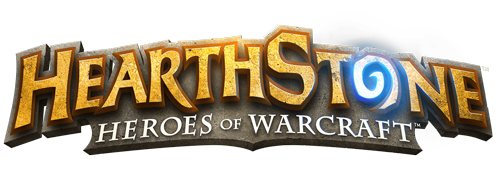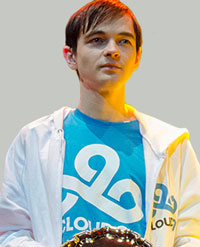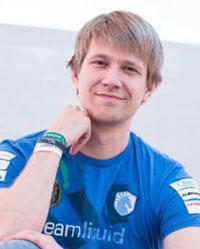
Hearthstone Betting Guide

Welcome to our Hearthstone betting guide. In this article, we will go through the basics of Hearthstone and its esports scene. We will cover the basic elements of Hearthstone gameplay and the inner workings of its competitive scene. You will also learn the most commonly available betting types on competitive tournaments and how they can benefit you in your online betting ventures.
If you are looking to have a bet, it is of utmost importance that you select a safe and reliable sportsbook that will do right by you as a bettor in terms of good odds, market coverage, and proper customer service.
Our list of recommendations singles out the best of the best on the market for esports betting, meaning you can’t make a wrong turn no matter which bookie you choose. You can also check out our review section for in-depth analysis of said sportsbooks.
| RANK | GAMBLING SITE | BONUS | PRODUCT OFFERS | REVIEW | VISIT |
|---|---|---|---|---|---|
| 1 |  |
€30 | 



|
READ REVIEW | VISIT SITE |
| 2 |  |
€200 | 



|
READ REVIEW | VISIT SITE |
| 3 |  |
Get €30 | 



|
READ REVIEW | VISIT SITE |
What Is Hearthstone?
Hearthstone is a collectible card game (CCG) created by Blizzard Entertainment. The game is available across all common computer and mobile devices.
Ever since its release, Hearthstone has exploded in popularity. In a way, it was the first truly accessible card game because of two factors: the game is free to play, and its gameplay is more simplistic in comparison to TCGs (trading card games) in the likes of Magic: The Gathering and Yu Gi Oh.
Those factors, combined with the fact that Hearthstone is based on the already established Warcraft universe, brought in droves of players who had never previously played a card game of any kind. In 2017, Blizzard reported that more than 70 million Hearthstone accounts have been created to date.
How Is Hearthstone played?
As with any card game, Hearthstone is turn-based. One player makes his move, clicks the “end turn” button, then waits for his opponent to make his move, and so forth.
Hearthstone, in its competitive form or otherwise, is played one on one (1v1). Each player can control one of 9 classes: Warrior, Warlock, Hunter, Rogue, Mage, Shaman, Druid, Priest, or Paladin, all derived directly from the mega-popular World of Warcraft. Each hero has a unique “hero power” that costs two mana crystals and can be used only once per turn.
In a Hearthstone match, each player starts out with a deck containing 30 cards. Cards are divided by rarities: legendary, epic, rare, and common. Each deck can contain only one copy of any one legendary card and a maximum of two copies of any other card. While rarities usually signify the power level of a card, many common cards have often been staples of the game’s most powerful decks. Hearthstone is a complex game in which the values of all cards are in an ever-shifting state due to card rotations.
Each class has specific cards unique to that class alone, but the bulk of all cards in Hearthstone are neutral, meaning they can be used by any class. Cards are earned by opening packs, which are guaranteed to drop at least one card of rare quality or higher. Card packs, or “booster packs” as they’re commonly called, can be bought with gold, accrued through winning matches and completing quests, or purchased with real money.
Hearthstone Gameplay
Each player begins the match with 4 or 5 cards in hand, depending on who goes first, as well as 1 available mana crystal. The number of available mana crystals increases by 1 each round, meaning by round 10, each player can use 10 mana crystals per turn. The number of mana crystals used can be manipulated in some ways with the help of some cards, but we’ll leave that aside for simplicity’s sake.
Each card costs a certain amount of mana crystals to be put into play. Naturally, the greater the impact of a card – the greater its cost in mana crystals.
Hearthstone is a game with a lively esports scene. The game stands apart from other esports in many ways. Not only is it the most popular card game esport by far, but its RNG aspect makes it an entertaining spectating experience like no other. This can come at the cost of frustrating players, as luck can be a deciding factor in the most crucial of moments, but the game’s inherent randomness is why it is often referred to as “Wizard Poker.” Daniel Negreanu, one of the most successful professional poker players of our time, is an avid Hearthstone player and claims he likes it even more than poker. He went as far as achieving “Legend” status, the highest possible rank of Ranked play.
Every few months, Blizzard releases a new set of cards that spice up the game and open opportunities for new powerful decks to be created. At the end of each year, 3 old sets get cut from the “Standard” rotation of cards, which creates even greater turbulence on the scene as some old decks die out and new ones emerge.
As a spectator, you can experience first-hand how the pro players adapt to Hearthstone’s ever-shifting landscape and how they express their creativity via new and unique decks that inspire casual players to try them out themselves. When two great players meet, it is a battle of two minds where nobody can predict what will happen next.
How to Bet on Hearthstone
Hearthstone betting is different from the most popular esports because it is not a team game. While teams and organizations sponsoring a group of players do exist, each match is played 1v1. This means that as a Hearthstone bettor, you must focus on following individual players, their playstyle, and success in the game. While it stands true that luck is a big element of the game, a skilled player will always stand out above others in the long run. When two professional players meet at the biggest tournaments, however, the skill gap between them is so small that it makes for some hyper-entertaining matchups.
Below, we will list the most common markets when it comes to Hearthstone esports betting.
Moneyline Bet – Staking your cash on a moneyline bet is the most basic form of betting there is. It simply represents betting on the winner of the match. With advanced knowledge of the game and Hearthstone’s meta, there are plenty of good opportunities when it comes to moneyline bets. This is because of the low skill gap between players at the highest echelons of competitive play, often leading to similarly high odds for both players.
Outright Winner – This type of bet represents betting on the winner of an entire tournament, usually unavailable once a tournament is underway.
Handicap Betting – A typical competitive Hearthstone match is played in a best-of-5 or best-of-3 format, and a single match can last anywhere between 5 to 30 minutes – depending on the decks and players in play.
This opens up the opportunity for handicap betting, one of the most popular markets for experienced betting enthusiasts.
Handicap bets are denoted with a + or -, meaning a positive (+) or negative (-) handicap. If you bet on a player with a negative handicap, he must overcome that virtual handicap and still win the match. If you bet on a player with a positive handicap, he must maintain that virtual advantage and come out ahead in the series.
Positive handicap bets are usually placed on underdog players that are below the favorite’s skill level but not by a huge margin. In contrast, you would place a negative handicap bet on a surefire favorite who you are certain will sweep the series in convincing fashion. Of course, these are just general guidelines, and your own judgment in the moment will be your best friend when making these types of bets.
As an example, if Kolento is playing against Firebat, and you place a handicap bet of -1.5 on Kolento in a best-of-3 series, Kolento must sweep the series 2:0 for your bet to be valid. In this hypothetical scenario, a 2:1 result would be regarded as a 0.5:1 for the sake of your handicap bet, meaning you would have lost your stake.
So, why place handicap bets? The answer is simple: greater odds! Handicaps allow bettors to take advantage of their deep knowledge of the meta-game and the players in exchange for a potential greater return of their bets.
Correct Score – Correct score bets are occasionally available on Hearthstone matches, as bookmakers still haven’t taken full advantage of the potential Hearthstone offers in terms of esports betting. This bet is self-explanatory, as you are simply betting on the correct score in matches in a BO3 or BO5 series.
Top Hearthstone Players
Unlike most other esports, a lot of Hearthstone professionals ply their trade on Twitch.tv, which serves as their main source of income, rather than tournament prize money. There are those who participate in both and have made quite a name for themselves over the years, which is why we will single them out below. However, keep in mind that Hearthstone’s turbulent meta and inherent randomness means that it’s impossible to pinpoint the best players at any point of time, let alone a single best player of all time.
Kolento
Team: Cloud9
Nation: Ukraine
Tournament Winnings: $200,000+

Aleksandr Malsh, better known by his nickname Kolento, is widely regarded as one of the most brilliant Hearthstone players since the game’s inception. Just like chess players are able to think a few moves ahead, so does Kolento often outwit his opponents with his composure and patient intelligence. It is something only a few players are capable of in moments of intense pressure such as tournament finals.
Kolento’s most notable achievements include winning the CN vs EU Season 2, Kinguin Pro League Season 1, DreamHack Hearthstone Championship, and earning 2nd place for Ukraine in the 2017 Hearthstone Global Games tournament.
Kolento is also active on Twitch.tv, where he has a loyal following of thousands of viewers. That is because he makes sure to vocally express his thought process while playing, which can serve as a fantastic learning experience for those willing to learn and improve their game. Kolento has crafted many decks that have taken over the meta. The most notable is his “Miracle Rogue” deck, which had an omnipresence on the pro and Ranked scenes, resulting in a direct intervention by Blizzard who went on to nerf some of the deck’s most vital cards.
Firebat
Team: Omnislash
Nation: USA
Tournament Winnings: $230,000+

James “Firebat” Kostesich is one of the most prominent American Hearthstone players, who broke through on the scene in 2014. Coincidentally, that year was his best one ever, as he managed to go through the qualifiers and reach the inaugural Hearthstone BlizzCon World Championship – boasting a prize pool of $250,000.
During the qualifiers, Firebat bested big names in the likes of Hyped, StrifeCro, and Twisted in several exciting BO5 matchups. At the Championship event itself, Firebat stormed through to the final, where he faced Tiddler Celestial – who was then regarded as the best player coming out of the Chinese region. Firebat swept the series 3:0 and became the first-ever Hearthstone World Champion.
As a player, Firebat is versatile and extremely dedicated. He would practice his decks for 10 hours each day and dedicated himself to the tiniest of details in the hope of coming out ahead. Nowadays, Firebat plays under Team Omnislash’s banner and has an active Twitch.tv and YouTube following.
Savjz
Team: Team Liquid
Nation: Finland
Tournament Winnings: $49,000

Janne “Savjz” Mikkonen is a former Magic: The Gathering player who took his trade to the Hearthstone scene not long after his release. Ever since his arrival on the scene, Savjz’s previous card-game experience was evident, as he swiftly made a name for himself as one of the most inventive Hearthstone players on the scene.
Savjz prefers playing Druid and has crafted many dominating Druid decks over the years, but he is also a versatile player capable of intelligent, strategic thinking. Out of all Hearthstone players on Twitch.tv, Savjz is one of the most popular ones due to his ability to find the best play in the most complex of situations time and time again.
Besides turning out as a player on Twitch and various prominent tournaments, Savjz has often taken up the commentator role, offering his brilliant insight to viewers by way of explaining why each player is making a certain move and how it will affect the outcome of the match. If you’re looking to get better at Hearthstone, Savjz offers an informative stream that is backed up with loads of entertainment and memorable moments.
And in case you’re wondering how to pronounce his nickname…well, let us know when you find out!
Hearthstone Professional Tournaments
The Hearthstone competitive scene mostly falls under the wing of Blizzard themselves, and it is a year-long venture with the culmination being the World Championship held at Blizzard’s annual gaming festival – BlizzCon.
Players can make their way to the World Championship by accumulating points along the way. These points can be garnered in a multitude of ways, one of them being placing high on the Ranked ladder – which resets each month.
Additional ways of accumulating points are via participation in various offline and online tournaments that are held throughout the year. In some tournaments, the mere participation grants a certain number of points, but naturally, the higher a player ranks in that tournament, the more points he will accumulate.
To make things more organized, players are separated by regions: Americas, Asia Pacific, China, and Europe. You can track each region’s ladder and player points in real time over at Hearthstone’s esports page.
The grand event at BlizzCon is always a joyous occasion to Hearthstone fans. It brings not only a face to face of the best players on the planet but also an event with plenty of exciting announcements, and that makes it a worthwhile viewing experience on the whole. The players themselves battle it out for a prize pool of $1,000,000.